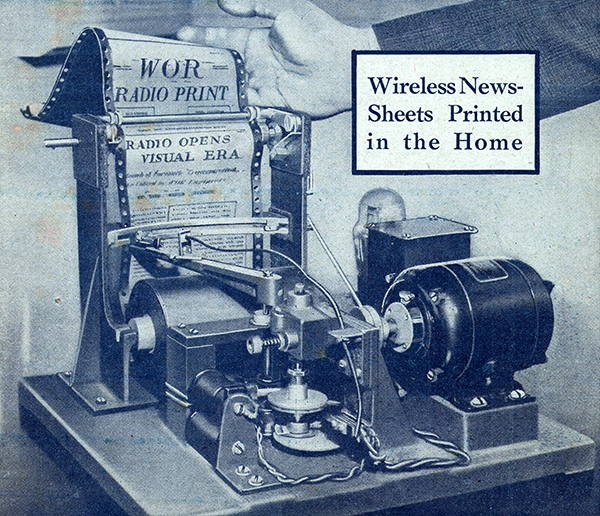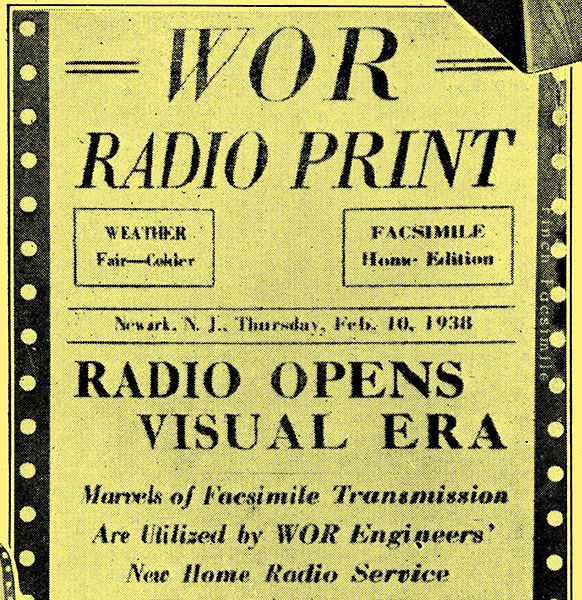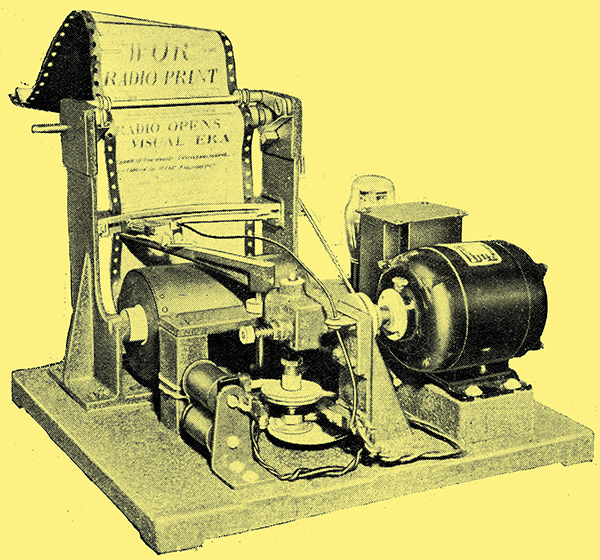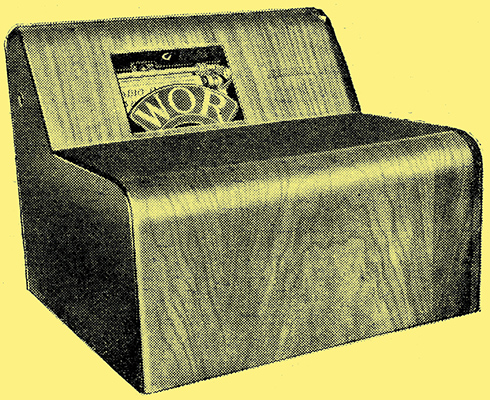|
This was the Cover article from the issue.

American Facsimile
Experimental transmissions of facsimile are commencing from a number of American broadcasting stations. At present the hours of transmission are outside those devoted to the ordinary broadcasting programmes, being from midnight to 6 a.m. The apparatus is, however, provided with a time switch so that it will function without attention, switching itself on at midnight and off again when the transmission has ceased.
It is envisaged that the matter of the transmissions will take the form of a news-paper, and owners of the necessary gear will consequently come down in the morning to find a facsimile reproduced newspaper awaiting them.
An ordinary broadcast set is employed, and the facsimile apparatus is connected to its output instead of the loud speaker. In this respect it is similar to the well-known Fultograph transmissions which took place in this country some ten years ago. The actual mechanism, however, is rather different.

This photograph shows the clarity of the 'printing' obtained in the reproduced images.
At the transmitter, the material to be transmitted is scanned by a light beam, the reflected light falling upon a photo-cell and so producing variations in an electric current. The scanning speed is about 100 lines a minute, corresponding to one inch in depth; the width of the line of type is some four inches. In six hours of transmission 30 ft of material can be dealt with.
Audio-Frequency Carrier

The details of the recording apparatus are clearly shown in this view of the Finch equipment.
The carrier of the transmitter is not modulated directly by the 'picture' currents, but by a 3 kHz current which acts as a carrier for the 'picture'. In the receiver an output at 3 kHz, modulated by the 'picture' signals, is obtained and applied to the facsimile apparatus. This varies in detail with different makes of apparatus. In general, however, a roll of paper is provided and a recording stylus moves across it in synchronism with the mechanism of the transmitter scanner.
With the Finch system 200 ft rolls of sensitised paper are used, and the paper is obtainable with various coloured surfaces. It is the coloured surface which is broken down by the 'picture' currents to form the reproduction of the transmitted subject. In the RCA equipment a different system of recording is used.
In the products of this firm a carbon paper travels between the recording paper and the stylus.
The present transmissions are experimental, and it remains to be seen whether or not facsimile will achieve any great measure of popularity. The present price of equipment is 125 dollars, but mass production would probably halve this figure. Some fourteen stations are licensed for facsimile transmission, and among these are several owned by newspapers.

A view of the complete recorder used in facsimile.
|